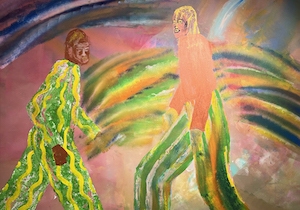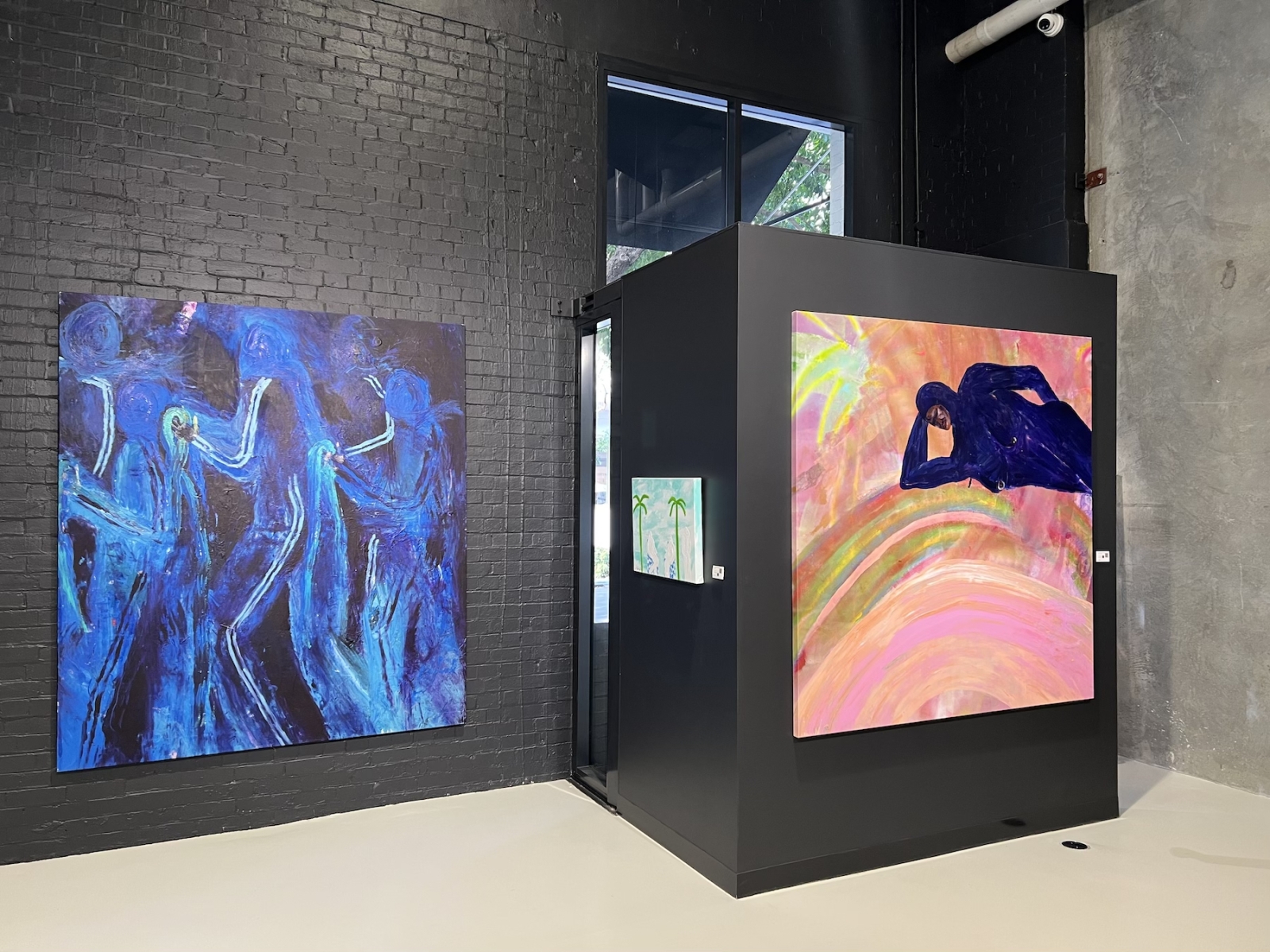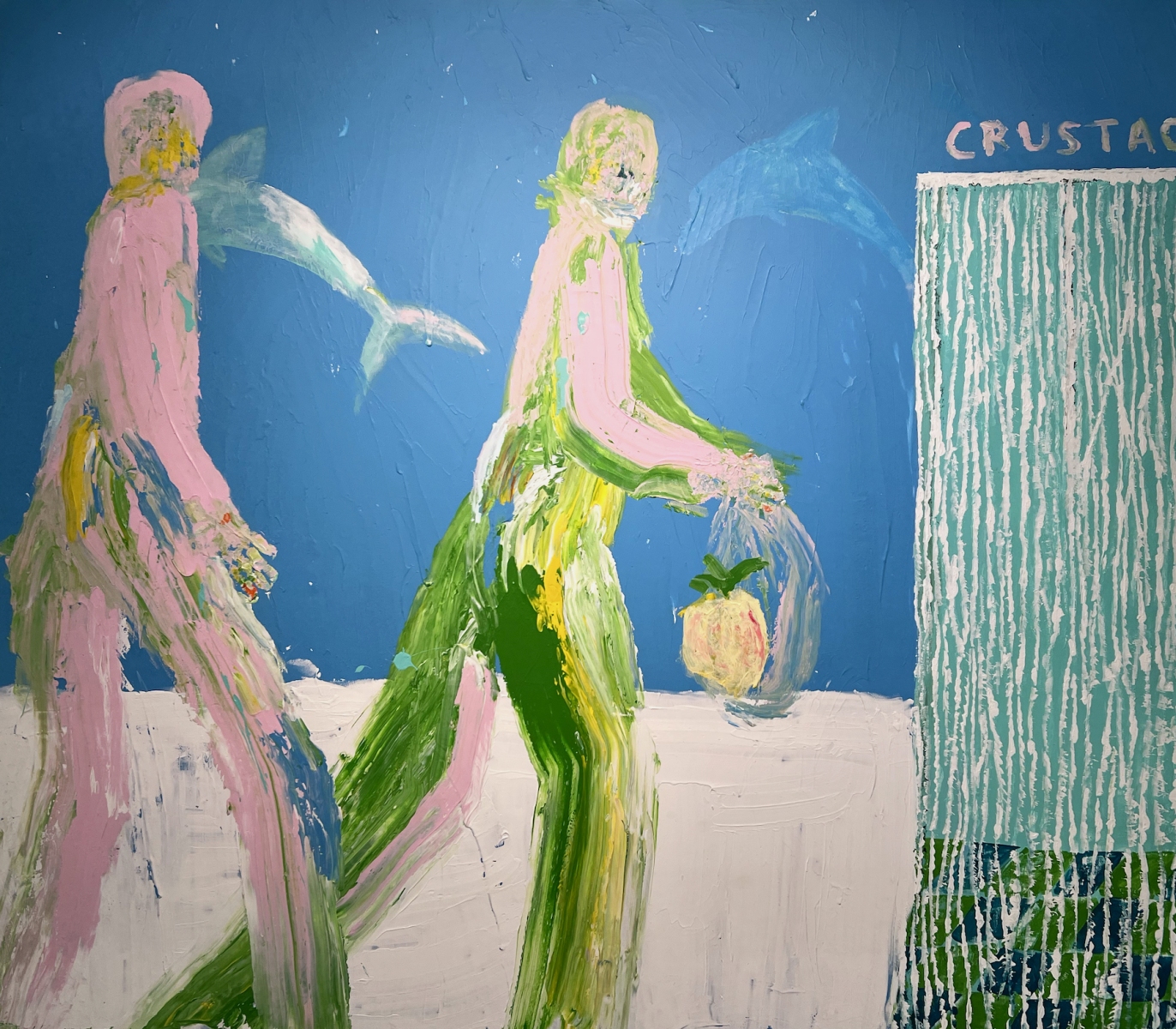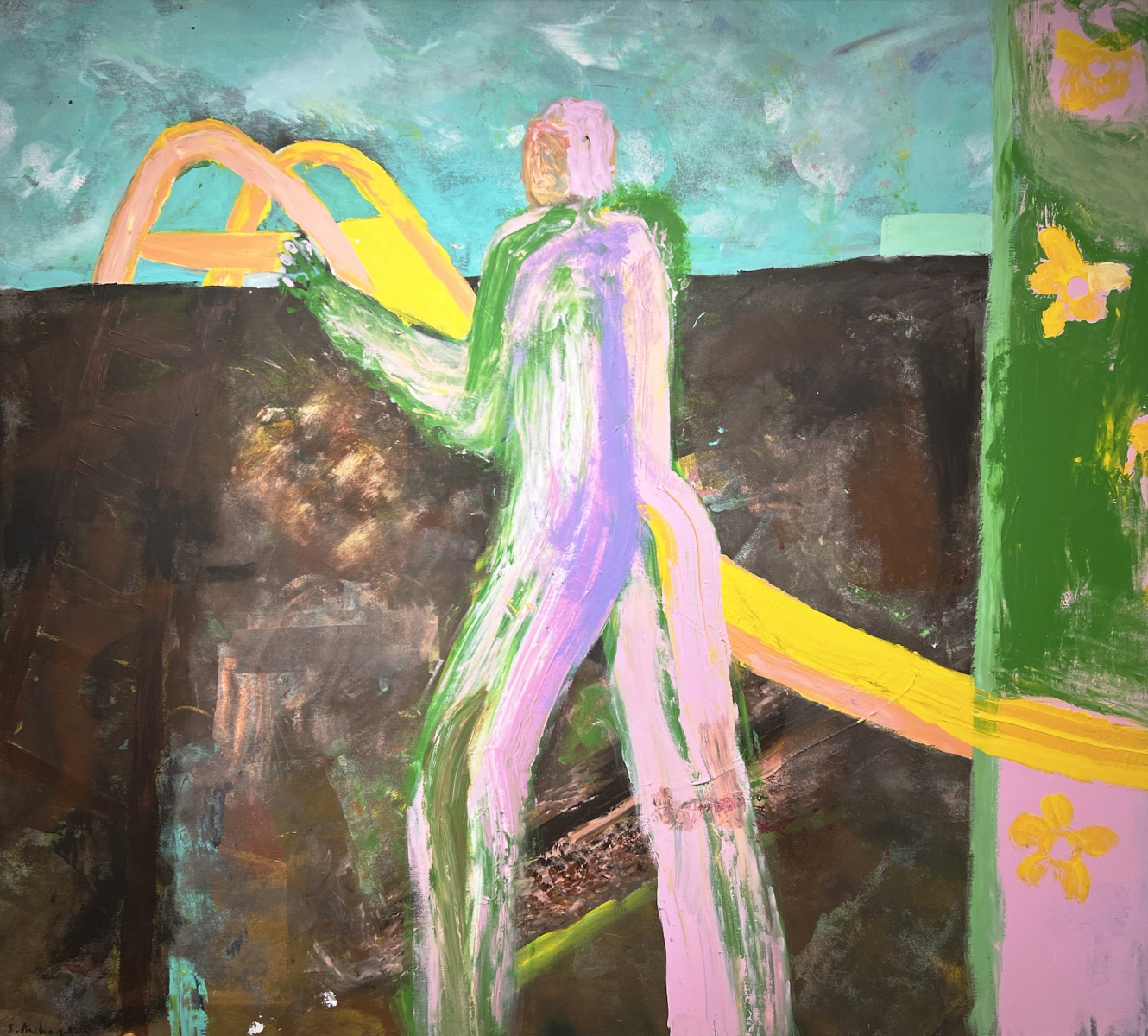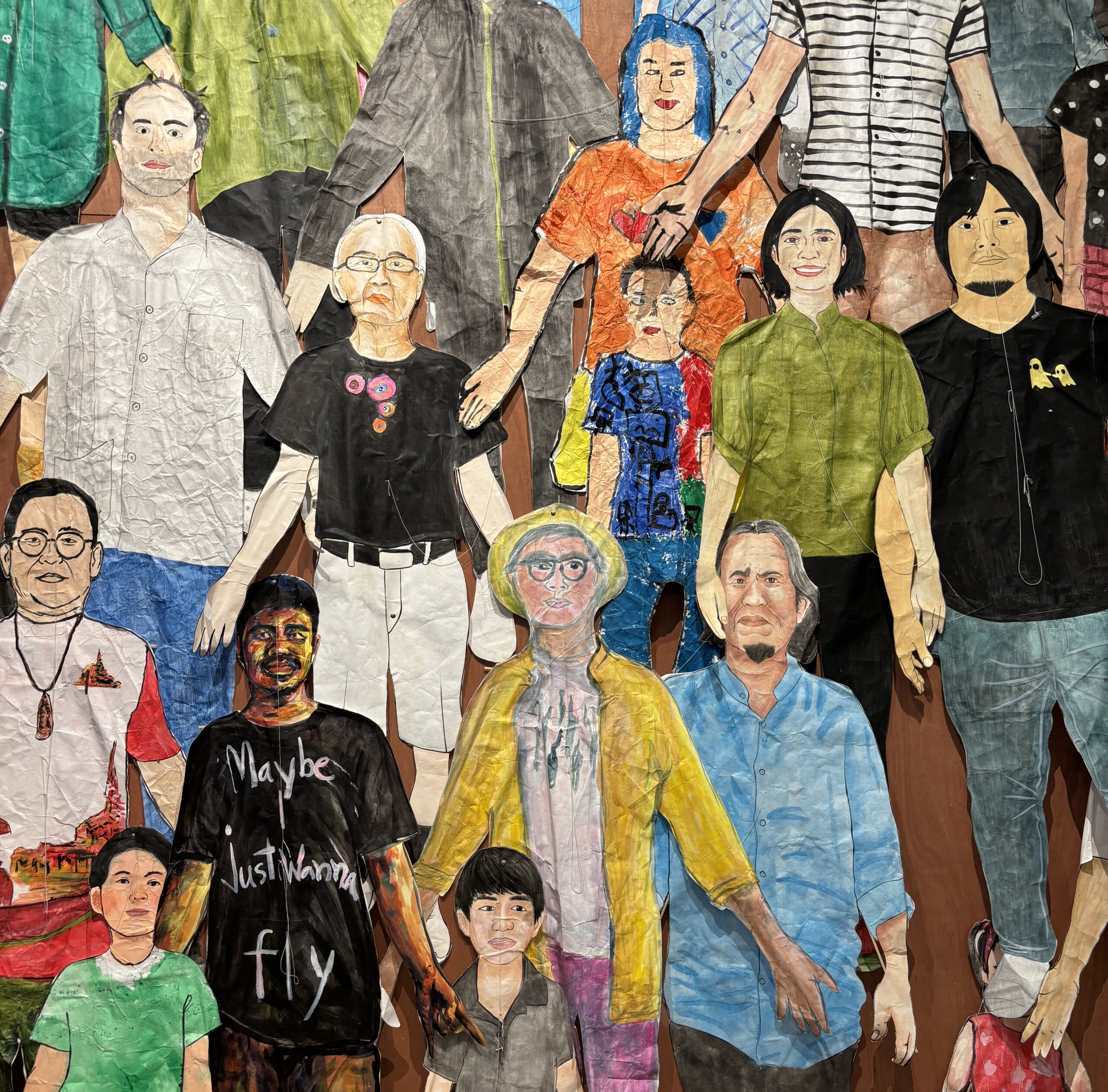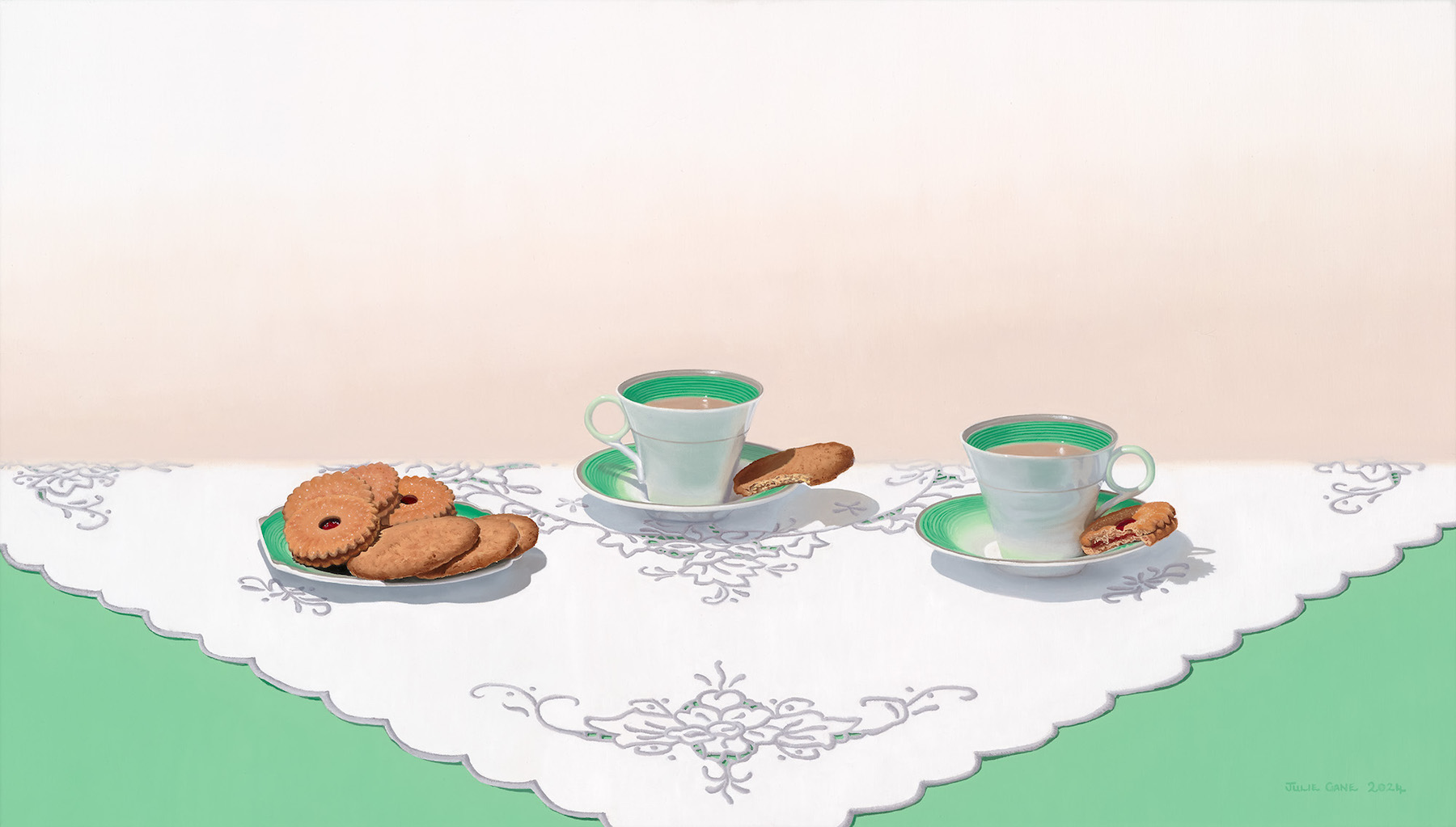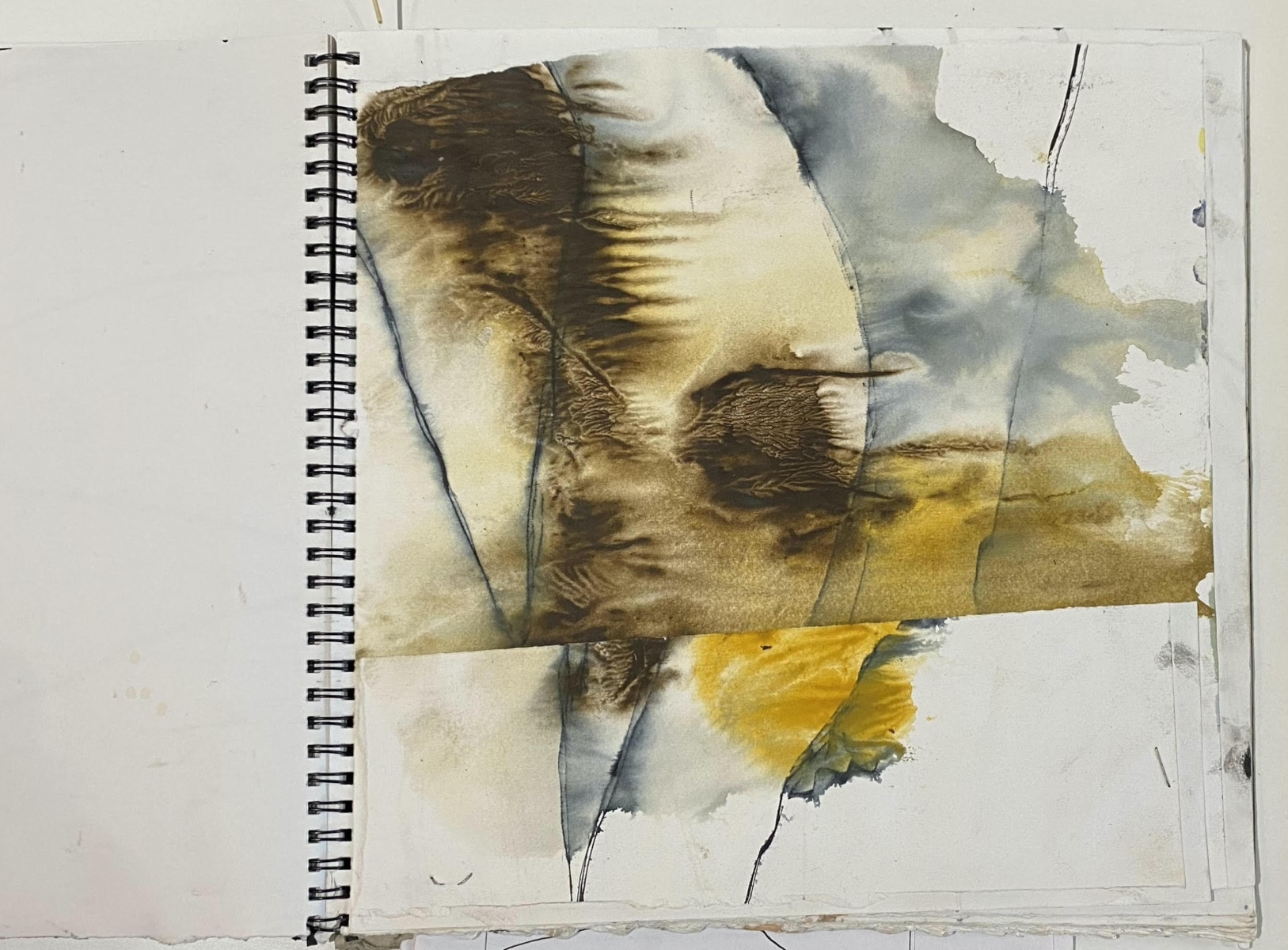In the theatrically-lit space of Studio Gallery on opening night, visitors’ shadows cast dramatic silhouettes on Stanislas Piechaczek’s paintings. The stark contrast of shadows against brilliantly colourful artworks infused the space with an extraordinary vitality, emphasising the paintings’ ordinary inspiration. In these works, Piechaczek explores the beauty of the everyday, and there’s nothing mundane about it.
While the lively atmosphere of opening night effectively complimented Piechaczek’s work, I desired to experience the space and the artwork in a setting more akin to what passersby might encounter. I decided to wander in a few days later.
The gallery’s spacious entrance reveals the first set of expansive artworks, portraying indistinct figures enveloped in colourful settings. Leaving his characters “faceless and unresolved,” Piechaczek says he is able to “focus on their spiritual and emotional qualities.” Where the ample space of Studio Gallery might engulf other paintings, Piechaczek’s large works fit seamlessly here, his smaller works nestling into abstract corners. One would be hard-pressed to find a more fitting venue.
In Piechaczek’s artworks, figures appear within blurred environments, discernible solely through elements that hint at their settings: palm trees and sand coloured paint for beaches, or Smeg fridges, dark walls, and fish for marketplaces. Caught in the sunlight of the gallery’s entryway, the work’s metallic acrylic sparkles. The paint is now stagnant, but echoes of the movement that once textured the linen remain. Piechaczek develops his uniquely textured surfaces by layering his application of paint with a variety of brushstroke techniques and physical interactions. One distinctive detail is his incorporation of pressed handprints in lieu of painting his figures’ hands. This functions smoothly thanks to the human-sized proportions of his subjects.
The phrase cocktails before noon implies a time and activity. Piechacvek describes this exhibition as “deeply personal,” encompassing the ebb and flow of life. A decade ago, Piechaczek relocated from France to Australia. Piechaczek displays commonalities across both cultures as he captures their everyday similarities: shopping in supermarkets, enjoying playgrounds, exploring fish markets, even visiting nude beaches. Amidst these shared experiences, Piechacvek integrates elements typically associated with Australia, such as marine life, palm trees, and tropical fruit.
For example, in Groceries Now! and Caviar we see Piechaczek’s signature faceless figures shopping in a place brighter than familiar stores. Figures strutting the grocery store aisles sport imagery inspired by the sunshine state. Crustaceans, dolphins, and pineapples further adorn the work. Piechaczek’s rich array of colours and textures infuse these ordinary scenarios with a sense of childlike wonder.
The figures in Piechaczek’s work, like us in contemporary life, are always in motion. By contrast, his artworks lure us into slow looking and contemplation of their surface. In turn, his art is a powerful compellent to reevaluate our relationship with the everyday, to experience the tranquillity of moments that we often rush past.
Turning to leave, both the gallery’s walls and the work’s artistic themes take on a darker tone. In one painting, formless blue figures merge and overlap with each other against a blackened background. The deliberate pairing of artwork colours and moods throughout the exhibit enables us to trace Piechaczek’s emotional rollercoaster.
One of the exhibition’s few moments of stillness manifests in Disco Depression, a work located on the shadowy side of the gallery. In this work, a violet figure lies on a rainbow archway, gazing down to the space below. The colour violet, often associated with introspection, contemplation, and a sense of mystery, paired with the inaction of the subject, invites viewers to engage with this work on a deeper emotional level. Although subtly portrayed, the figure’s downturned face and body language are both given more detail than in other works. Set against a rainbow, this figure serves as a poignant reminder that beauty can emerge from moments of melancholy.
I wanted to spend more time with Disco Depression, and I wish there were more openly emotional pieces such as this in the show. Nevertheless, I appreciate the multifaceted nature of Piechaczek’s collection. Others will have differing views and the show is worth visiting to find out for yourself.
Kaitlyn Mackenzie is Bachelor of Journalism/Arts student at the University of Queensland and a casual radio producer at 4BC Brisbane. Beyond her academic and professional pursuits, she actively participates in vintage clothing markets and holds a keen interest in exploring the intersections of fashion, art, and journalism.

